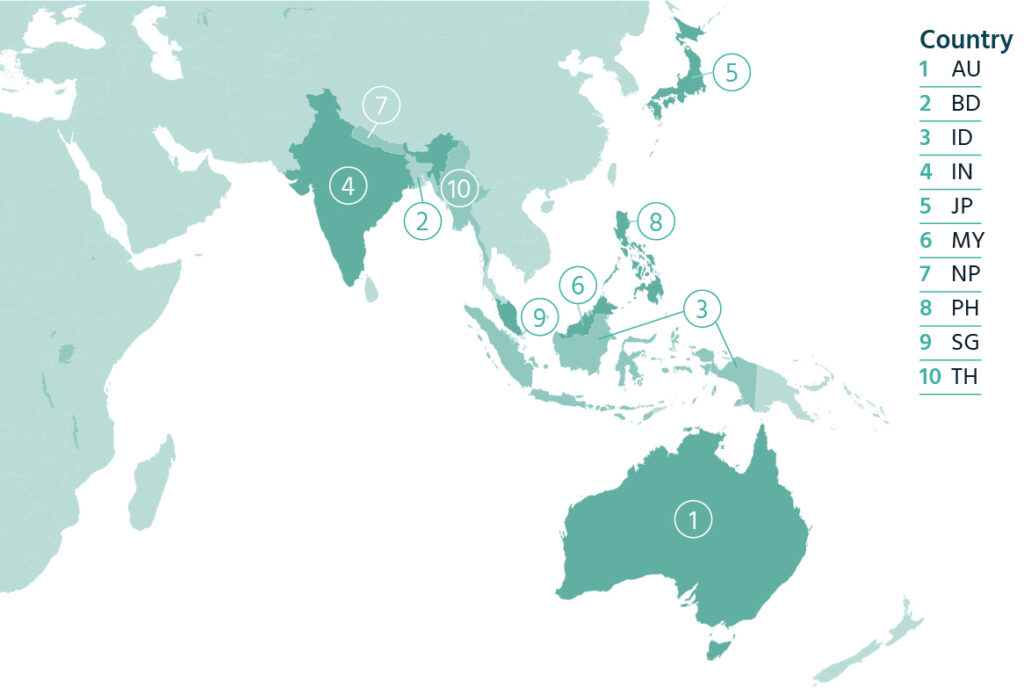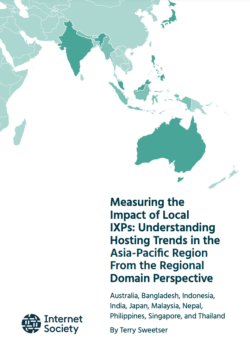How do local Internet exchanges affect Asia-Pacific? Internet exchange point hubs are increasingly playing a critical role in making local Internet faster and more affordable. So how does the presence of one or more local Internet exchange points (IXPs) aid content hosted locally? In 2020, we initiated a research project to find out.
This report presents an analysis of the country code top-level domain (ccTLD) web-server presence and performance in the Asia-Pacific region.

The project gathered data from locally hosted machines in Australia, Bangladesh, Fiji, India, Indonesia, Japan, Malaysia, Nepal, Pakistan, Philippines, Singapore, and Thailand using a complete list of local ccTLD domains. Performance data for latency and hop counts were gathered from the ten locations as IPv4 and IPv6 addresses of the remote servers, providing HTTPS for each domain. This data was further enriched with geolocated remote IP addresses and a secured routing, Resource Public Key Infrastructure (RPKI) status of each address check.
The study shows local Internet exchange points play a pivotal role in ensuring quality of access to local content and in improving the quality of experience for users in the Asia-Pacific region. It equally shows when IXPs are part of an ecosystem—made up of local and international operators attached to local Internet exchange points and a vibrant technical community—they can best serve local content.
